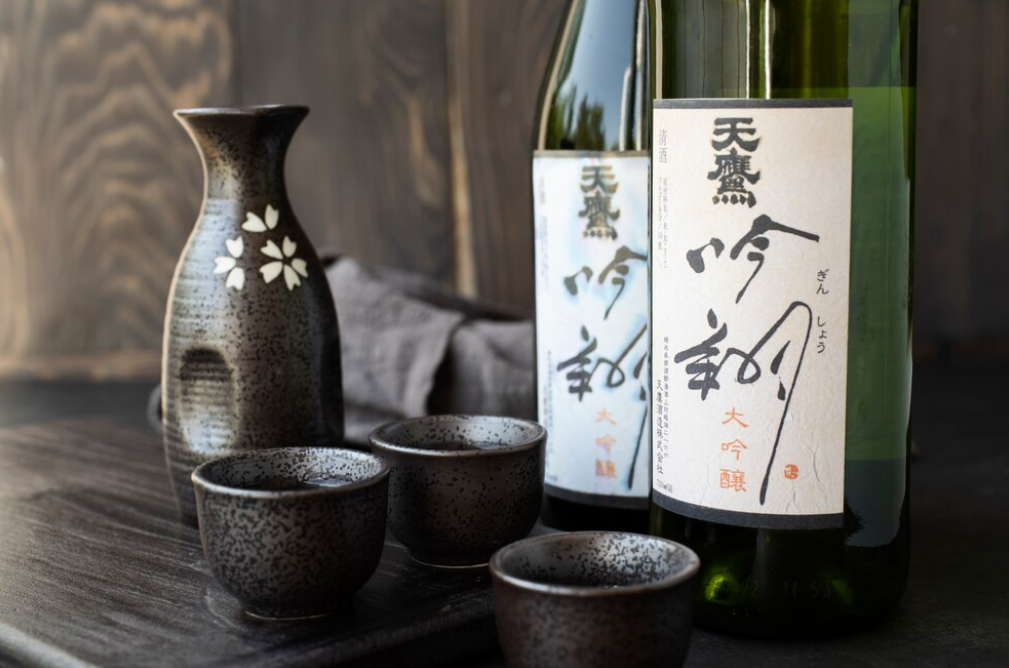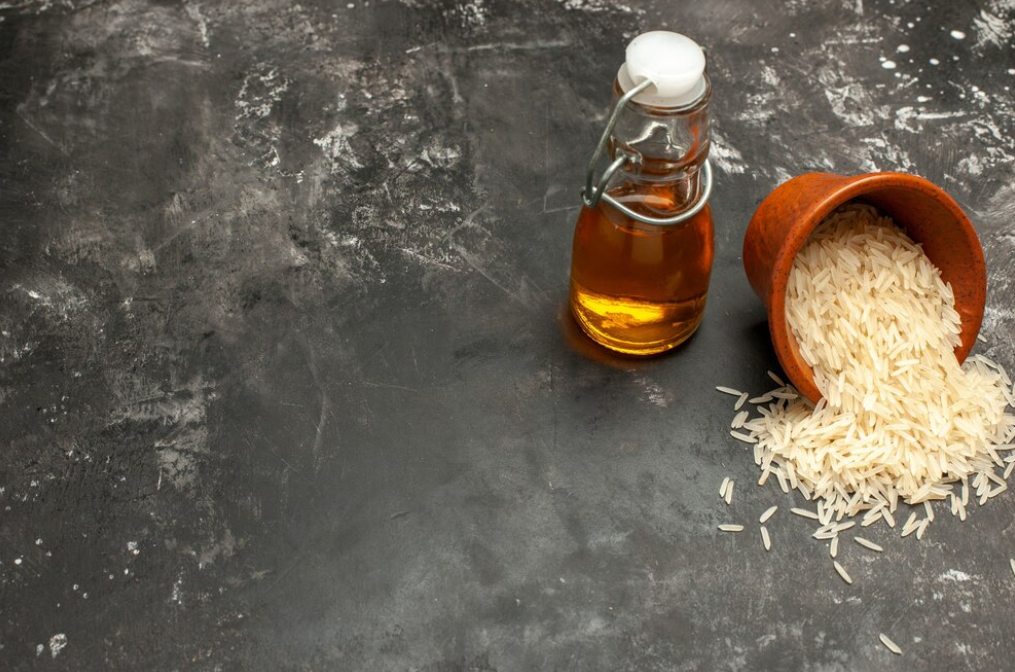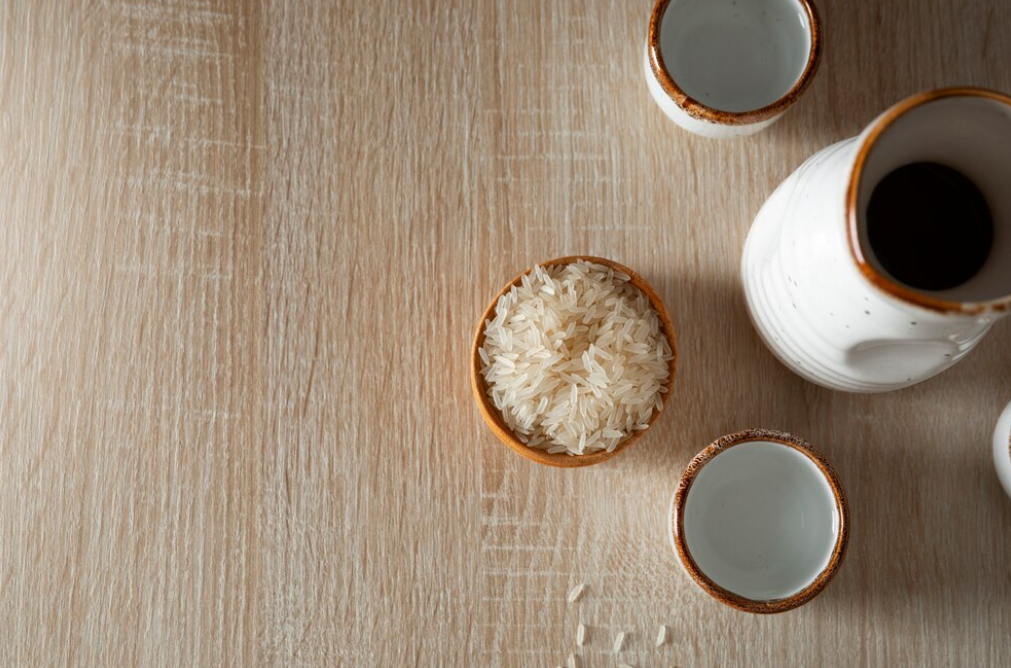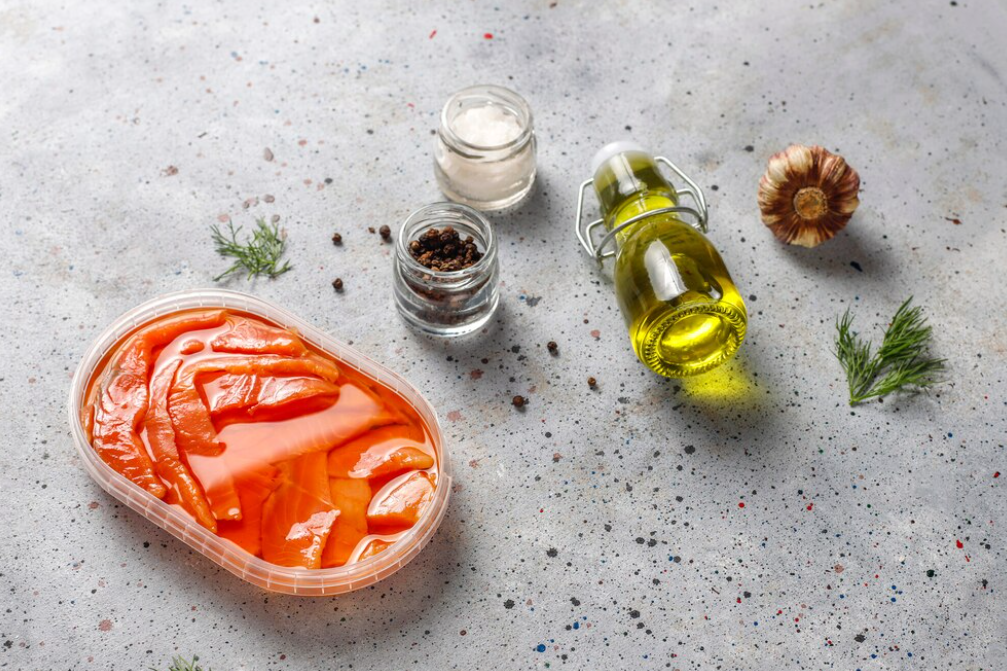Mirin vs Shaoxing
Mirin and Shaoxing are types of cooking wines commonly used in Asian cuisine, available at Asian grocery stores. They serve several culinary purposes, including enhancing flavors, neutralizing strong odors from seafood or meats, and tenderizing meat. Despite their similar uses, they differ in origin, flavor, appearance, and specific culinary applications. Mirin, a sweeter option, is typically used in Japanese dishes, while Shaoxing, a drier variety, is favored in Chinese cooking.
Both Mirin and Shaoxing wine are crucial in their respective culinary traditions, each possessing unique qualities that make them ideal for specific dishes. This guide explores the differences between Mirin and Shaoxing wine, providing insights into their appropriate uses in cooking.
What Is Mirin?
Mirin is a traditional Japanese sweet rice wine created by fermenting steamed mochi rice, koji (fermented rice), and shochu (sweet potato alcohol) for 40 to 60 days. During fermentation, the starch in the rice breaks down, producing sugar, umami amino acids, and organic acids, giving mirin its distinct tangy-sweet flavor. With an alcohol content of up to 14 percent, mirin is taxed as an alcoholic beverage in Japan. The original type of mirin, known as hon-mirin, was first made in the 16th century and was considered a luxury. It became more widespread in the early 1900s, especially in soy-sauce-based fish dishes and as a key ingredient in the dipping sauce for soba, paired with fish stock and soy sauce.
In American grocery stores, you may find bottles labeled ‘aji-mirin,’ meaning “tastes like mirin.” These products might contain added sweeteners but can still be used in recipes. For traditional Japanese mirin, check Asian markets, specialty grocery stores, or online retailers.
Varieties of Mirin
Mirin comes in various types, each offering distinct flavors and characteristics. The most traditional form is Hon mirin (本みりん), also known as true mirin, which boasts a 14% alcohol content and contains no added salt. This type is made from a blend of steamed glutinous rice, rice koji mold, and shochu—a distilled alcoholic beverage. The mixture undergoes fermentation for about 40 to 60 days, during which enzymes from the rice koji break down the starch and proteins in the rice. This process produces a variety of saccharides, amino acids, organic acids, and aromatic compounds, culminating in the rich and complex flavor profile of Hon mirin. Hon mirin can be stored in a cool place for up to three months. If refrigerated, sugar may crystallize at the bottom of the container, but it remains usable.
Takara Mirin represents a different style, incorporating sake instead of shochu along with glucose and corn syrup (but notably avoiding High Fructose Corn Syrup). This variation still captures the essence of traditional mirin but with a slightly different nuance due to the use of sake. Brands like Manjo Hon Mirin by Kikkoman, often referred to as white mirin, also fall under the category of true mirin, adhering to traditional methods and ingredients to deliver authentic taste and quality.

Using Mirin in Cooking
Mirin is a Japanese cooking wine that is a staple in many kitchens for stir-fries, sauces, and marinades. However, this versatile ingredient also has numerous other applications that may not be immediately obvious. Known for its sweetness due to its high sugar content, it is excellent for tenderizing meats and crafting delectable glazes for fish, chicken, and beef. It also plays a crucial role in the composition of teriyaki sauce and adds a touch of umami to various Japanese soups.
Flavor Profile of Mirin
Mirin stands out with its uniquely sweet flavor, setting it apart from other Asian condiments such as soy sauce, which are celebrated for their umami qualities. This Japanese seasoning is crafted from rice yeast and alcohol, and it comes in several varieties that differ in alcohol content.
Purchasing Mirin
Mirin is available for purchase at a variety of locations, including Japanese and Korean grocery stores, broader Asian supermarkets, and various online retailers. This accessibility makes it easy to find in specialized food stores as well as general outlets that offer a wide range of international products.
Storing Mirin
Ensure that bottles of mirin remain unopened until needed and store them in a cool, dark area away from direct sunlight. When kept in its original bottle, mirin can last indefinitely. Once opened, it is crucial to close the cap tightly after every use, as exposure to oxygen can gradually convert the alcohol in mirin to vinegar.
What Is Shaoxing Wine?
Shaoxing rice wine (紹興酒), known by several names including shao hsing, shao xing, and shaohsing wine, is a traditional Chinese beverage from Shaoxing, Zhejiang province, a region noted for its rice cultivation. It is crafted by fermenting rice with water and a small amount of wheat, making it unsuitable for those on a gluten-free diet. It has a brown color and a flavor profile that is both stronger and sweeter compared to mijiu, another popular Chinese and Taiwanese rice wine.
The alcohol content in Shaoxing ranges from 18 to 25 percent, significantly higher than the average beer (about 5 percent) and table wine (around 12 percent). These are widely consumed across South, Southeast, and East Asia, primarily as beverages.
Shaoxing features several variants, including nu’er hong, which translates to “daughter’s red” in Chinese. The color red holds auspicious value in Chinese and Taiwanese cultures, enhancing the significance of nu’er hong as a celebratory beverage. Traditionally, families in Shaoxing prepare this when a daughter turns one month old, burying the bottle to be opened and enjoyed on her wedding day.
Varieties of Shaoxing Wine
Shaoxing wine comes in two main types. Aged Shaoxing wine is often sold in a ceramic jug and served warm as a beverage, but it is also excellent for cooking. Cooking Shaoxing wine has salt added, making it easier to sell in grocery stores and online. While this type is not meant for drinking, it can be used in cooking based on your budget and taste preferences.
Using Shaoxing Wine in Cooking
Shaoxing wine adds complexity and depth to dishes. It is frequently used in marinades for meats and in wonton or dumpling fillings. Many slow-cooked or braised meat dishes, such as dongpo pork, require it. It is also essential for the brine in drunken chicken and drunken prawns. Additionally, Shaoxing wine is key to Chinese West Lake beef soup and white cut chicken, and just a dash can enhance Chinese chicken stock.
Flavor Profile of Shaoxing Wine
Shaoxing wine is an amber-colored, clear beverage with a slightly spicy and slightly sweet taste. Its flavor is often compared to caramel, with some detecting nutty notes and others sensing hints of vinegar.

Purchasing Shaoxing Wine
Shaoxing wine is readily available at Asian grocery stores, particularly those specializing in Chinese products, and can also be purchased online. Many well-stocked supermarkets might also offer it in their international aisles.
Storing Shaoxing Wine
Aged Shaoxing wine should be kept sealed in a cool, dark place and will remain in good condition for up to six months. If you use it infrequently, storing it in the refrigerator may extend its shelf life. Meanwhile, Shaoxing cooking wine does not need to be refrigerated. Simply keep it in your pantry and monitor the expiration date for optimal freshness.
Differences between Shaoxing Wine and Mirin
While some sources suggest that mirin can be a good substitute for Shaoxing wine, it’s important to note that mirin is much sweeter. To use it as a substitute, you would need to reduce the sugar in your recipe. A more accurate alternative to Shaoxing wine is dry sherry (not cooking sherry). Shaoxing wine has a deep, aromatic, and slightly sweet flavor, making it unique. Dry sherry often appears in recipes for Chinese dishes, not because it’s commonly used in China, but because it’s more familiar to Americans and serves as an acceptable substitute.
Comparing Mirin and Shaoxing Wine: Origins and Production
Mirin
Originating from Japan, mirin (みりん, 味醂) is a sweet rice wine created by fermenting glutinous rice, rice koji (a fermentation starter), and distilled alcohol. The fermentation process can last from two months to several years, resulting in a light, sweet, slightly floral, and almost bright flavor. Mirin is a staple in Japanese cuisine and is essential in any Japanese kitchen. There are two main types of mirin: “Hon-mirin” (true mirin), which is of higher quality and thus more expensive, and cooking mirin. For authentic Japanese dishes, Hon-mirin is the preferred choice.
Shaoxing Wine (shào xīng jiǔ 绍兴酒)
Also known as huā diāo jiǔ 花雕酒, Shaoxing is a savory Chinese rice wine from Shaoxing City in Zhejiang Province, China. Made from brown glutinous rice and typically aged for 10 years or more, it has a longer aging process that imparts a deeper and more complex flavor. It is a crucial ingredient in Chinese cooking. Despite some misconceptions, Shaoxing is not spicy. There are two types: Drinking Grade Shaoxing (no salt, more expensive, and can be consumed as an alcoholic beverage) and cooking Shaoxing. It is not gluten-free due to the addition of wheat during production. When a Chinese recipe calls for cooking wine, it almost certainly refers to Shaoxing, although other Chinese rice wines, such as Clear Rice Wine (mǐjiǔ 米酒) and Clear Chinese Rose Wine (Mei Kwei Lu), also exist.
Comparing the Flavors of Mirin and Shaoxing Wine
- Mirin: This sweet rice wine is characterized by its sweet flavor with a slight tang or acidity, primarily due to its sugar content. It often possesses a floral quality and can be almost syrupy in consistency. With an alcohol content ranging from 8-14%, mirin is lower in alcohol compared to Shaoxing wine. Mirin’s unique flavor profile makes it a staple in Japanese cuisine, often used alongside sake to enhance dishes with its sweet and tangy notes.
- Shaoxing Wine: In contrast, Shaoxing wine offers a rich, deep, and distinct flavor. This Chinese rice wine is much less sweet than mirin, with its depth and complexity resulting from an extended aging process. Some cheaper brands may add caramel to mimic the darker color of longer-fermented wines. The alcohol content of Shaoxing wine typically ranges from 16-25%. Cooking Shaoxing wine often has salt added to it, allowing it to be sold in supermarkets and used specifically for cooking.

Comparing the Appearances of Mirin and Shaoxing Wine
- Mirin: Has a light, clear yellow hue and can be quite thick, resembling the consistency of syrup. Its appearance reflects its sweet, rich flavor, making it visually distinct in Japanese cuisine.
- Shaoxing Wine: Shaoxing wine, on the other hand, is thinner in consistency, similar to water or soy sauce. Its color can range from clear amber to dark brown, depending on the fermentation process and aging duration. Some cheaper brands may add caramel to achieve a darker color, mimicking longer-aged wines.
Comparing the Uses of Mirin and Shaoxing Wine
Commonly used in Japanese cooking, mirin is an essential ingredient in dishes like teriyaki sauce, sukiyaki, and various glazes or marinades. Its uses include:
- Balancing salty flavors from soy sauce and miso with its sweetness.
- Tenderizing ingredients.
- Masking the fishy smell of seafood and the gamey flavor of meat.
- Glazing food to make it shinier and more attractive, thanks to its high sugar content—a quality that Shaoxing wine cannot achieve on its own.
Widely used in Chinese cuisine, Shaoxing wine is a key ingredient in many marinades, stir-fries, and sauces. Its uses include:
- Adding a savory depth of flavor to food, such as in Chinese Drunken Chicken—something mirin cannot do alone.
- Tenderizing ingredients.
- Eliminating strong odors of meats and seafood, as seen in dishes like fish congee.
Similarities Between Mirin and Shaoxing Wine
Mirin and Shaoxing wine share several common characteristics:
- Asian Cooking Wines: Both are traditional cooking wines integral to Asian cuisine. Mirin is a staple in Japanese cooking, while Shaoxing wine is essential in Chinese cuisine.
- Made from Rice: Both are made from fermented rice. Mirin is produced using glutinous rice, rice koji (a fermentation starter), and distilled alcohol. Shaoxing wine is typically made from brown glutinous rice and sometimes wheat.
- Flavor Enhancers: Both wines serve to enhance the flavors of various dishes. They add depth and complexity to taste profiles through sweetness, umami, or a balance of different flavors.
- Used in Marinades and Sauces: Mirin and Shaoxing wine are commonly used in marinades and sauces. Mirin often appears in teriyaki sauce and other glazes, while Shaoxing wine is frequently used in braising liquids and stir-fry sauces.
- Alcohol Content: Both contain alcohol, though in different amounts, which plays a crucial role in cooking. The alcohol helps tenderize meat and seafood and melds flavors together in a dish.
- Used to Mask Unwanted Flavors: Both wines are employed to mask strong odors in meats and seafood, enhancing their natural flavors.
Using Mirin and Shaoxing Wine as Substitutes

Mirin and Shaoxing wine have similarities that allow them to be used interchangeably in some cases. However, they are not perfect substitutes and have distinct characteristics that must be considered.
- Mirin as a Substitute for Shaoxing Wine: While mirin can add a sweet and floral flavor to dishes, its sweetness can be overpowering for recipes that require the savory depth of Shaoxing wine. Therefore, mirin is not ideal for dishes needing the more robust, complex flavors of Shaoxing wine.
- Shaoxing Wine as a Substitute for Mirin: On its own, Shaoxing wine cannot replicate the sweet and floral notes that mirin brings to a dish. For a better substitute, small amounts of the sorghum liquor Chinese Rose Wine (Mei Kwei Lu 玫瑰露) can be used. This wine contains sugar like mirin but has a much stronger floral flavor and significantly higher alcohol content.
Best Substitutes:
- For Shaoxing Wine: The best substitute is dry sherry in a 1:1 ratio. Dry sherry provides a similar depth and complexity to dishes.
- For Mirin: The best alternative is Japanese sake combined with a little sugar. Use ¾ tablespoon of sake and ¼ tablespoon of white sugar to replace 1 tablespoon of mirin.
Shaoxing Wine and Mirin: When They Aren’t Interchangeable
Mirin’s sweetness makes it a less suitable replacement for Shaoxing in many cases. Here are specific situations where using mirin instead of Shaoxing is not recommended, along with suitable alternatives:
- In Traditional Recipes: Authentic Chinese recipes designed for Shaoxing wine will not achieve their classic taste if substituted with mirin. For instance, the flavor of drunken chicken alters significantly with mirin. Conversely, traditional Japanese recipes typically utilize mirin and sake, not Shaoxing wine. While substituting may not ruin a dish, it will deviate from its traditional essence.
- When Sweetness Matters: In Japanese cuisine, dishes like teriyaki sauce, sushi rice, and various glazes rely heavily on mirin’s sweetness. Shaoxing wine, being less sweet and more savory, is not an effective substitute. If no alternatives are available, try mixing ¾ tablespoon of Shaoxing wine with ¼ tablespoon of sugar to replace 1 tablespoon of mirin.
- For Savory Depth: Shaoxing wine adds a bold, savory depth to dishes such as stir-fries, braised meats, and marinades. Mirin’s sweetness might overwhelm these savory qualities.
- In Mild-Flavored Dishes: The robust flavor of Shaoxing wine may overpower dishes with delicate or mild flavors. In such cases, consider using a simple syrup (made from water and sugar) instead.
- When Alcohol Content Is Crucial: The higher alcohol content of Shaoxing wine plays a significant role in the flavor and texture of some dishes, making mirin a poor substitute due to its generally lower alcohol level and availability in non-alcoholic forms.
- For Low-Sodium Diets: Substituting mirin for Shaoxing wine requires adding more sugar to match mirin’s sweetness, which may necessitate increased salt or soy sauce to maintain balance.
- For Low-Sugar Diets: Mirin, with its high sugar content, is not advisable for those reducing sugar in their diets.
- For Gluten-Free Cooking: Unlike many mirin brands that are gluten-free, Shaoxing wine may contain wheat, posing a risk for those with gluten sensitivities or celiac disease. Always check product labels.
- When Appearance Counts: Mirin’s clearer, lighter color differs from Shaoxing wine’s ability to impart a darker hue to dishes, which is crucial in recipes where the final appearance is key.
Conclusion
While Mirin and Shaoxing wine are both essential cooking wines in Asian cuisine, they serve different purposes due to their distinct characteristics. Mirin, with its sweet profile, is ideal for enhancing Japanese dishes, while Shaoxing wine’s savory and robust flavor is indispensable in Chinese cooking. It is crucial to consider these differences when choosing between the two for specific recipes, as each contributes uniquely to the flavor and overall outcome of dishes. Understanding their specific roles and flavors will ensure culinary success, whether you’re aiming for authenticity or experimenting with new tastes.

Post Comment